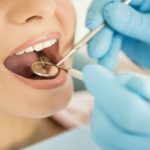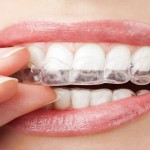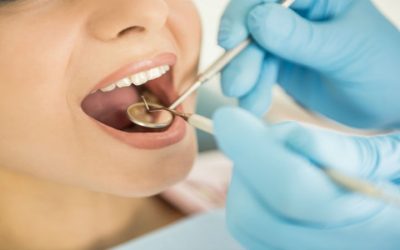Teeth implants are artificial tooth roots that are used in restorative work for missing teeth. Although considered cosmetic dentistry, they are important in preventing jaw bone loss, and are therefore also categorized as prosthetic dentistry. There are several factors for tooth loss, and implants in these instances are necessary for a couple of reasons. The implantation process is determined on a case-by-case basis and the recovery can vary depending upon the number of teeth implants and the condition of the underlying gum tissue.
Tooth Loss
There are several different reasons for tooth loss. Tooth decay, root canal failure, gum disease, trauma to the mouth, excessive wear and tear and congenital birth defects are all factors in tooth loss. People who have lost teeth may become self-conscious about smiling and talking in social situations. Also, biting irregularities can impact eating habits, causing issues with malnutrition.
Implantation Process
The process starts with a consultation with your dentist to review the teeth implants. Farmington Hills alone has more than 150 options for implant specialists. The initial consultation will start with a thorough examination and may include x-rays or other imaging, to evaluate bone density, quantity and structure. Your dentist, oral surgeon and the rest of your team want to be sure that you are a viable candidate for the procedure. Also, if the bone and tissue are insufficient bone and tissue grafts must be discussed. Anesthesia options will also be discussed, as well as the commitment to aftercare.
Once the procedure begins, there are two steps. First, the jaw is prepared to receive the implant. A small hole is drilled at edentulous spots (place where there is no tooth) in the jaw. Great care must be taken by the dentist not to damage any vital facial and jaw structures when boring the hole and placing the titanium screw. Often the images from the CT scan taken during the consult are used to help guide the dentist.
After the initial pilot hole has been drilled, the hole is widened to allow for the screw. Once the screw is in place, the surrounding gum tissue is secured over the implant and a cover screw is placed on top to allow the site to heal and osseointegration to occur. Osseointegration occurs when the implant anchors to the jawbone. At that point, a crown can be placed, allowing the gums to grow around it naturally.
Recovery
Recovery times can vary widely based upon how much work was done. Generally, it can take up to 6 months to heal from the implant surgery. For the first 5-7 days, a soft diet must be followed. Proper oral hygiene is critical to the success of the implant. Failing to follow the aftercare plan is one of the biggest reasons why teeth implants fail. Smoking is another. Once the implant has healed, the restorative work can begin. Six additional months can be planned on after the temporary crown is placed.
Dwoskin & Owens Cosmetic & Family Dentistry provides a number of dental care services, including the creation and application of teeth implants for our patients. Our experienced dental professionals are dedicated to providing personalized oral health care solutions for you every step of the way.








